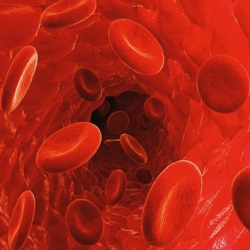
Imagine being able to label a trillion cells to detect what’s going on in each individual cell. That’s the goal of a study to allow individual cells to produce laser light. The wavelengths of light emitted differ based on size, shape, and composition of each laser, allowing precise labeling of cells.
“The fluorescent dyes currently used for research and for medical diagnosis are limited because they emit a very broad spectrum of light,” explains Seok Hyun Yun, PhD, of the Wellman Center for Photomedicine at MGH, corresponding author of the report. “As a result, only a handful of dyes can be used at a time, since their spectral signatures would overlap.”
Lead author MatjaHumar, PhD, also of the Wellman Center, adds, “The narrow-band spectrum of light emitted by these intracellular lasers would allow us to label thousands, in principle, up to a trillion, of cells individually [the estimated number of cells in the human body], and the very specific wavelengths emitted by these microlasers also would allow us to measure small changes happening within a cell with much greater sensitivity than is possible with broadband fluorescence.”
The trick is to use solid plastic fluorescent microbeads, which are readily taken up into cells, each with a unique signature spectrum based on the size and number of beads within a cell and the fluorescent dye used. “One immediate application of these intracellular lasers could be basic studies, such as understanding how cells move and respond to external forces,” says Yun, an associate professor of Dermatology at Harvard Medical School.
“Another challenging step will be figuring out how to use biologically generated energy from mechanical movement or a biochemical reaction to pump a cellular laser in a living body. Cells are smart machines, and we are interested in exploiting their amazing capabilities by developing smart-cell lasers that might be able to find diseases and fire light at them on their own.
“We can envision lasers completely made out of materials that are safe for use within the human body, which could enable remote sensing within the body or be used in laser-light therapies.”
